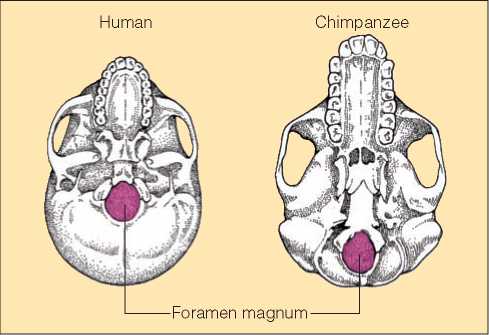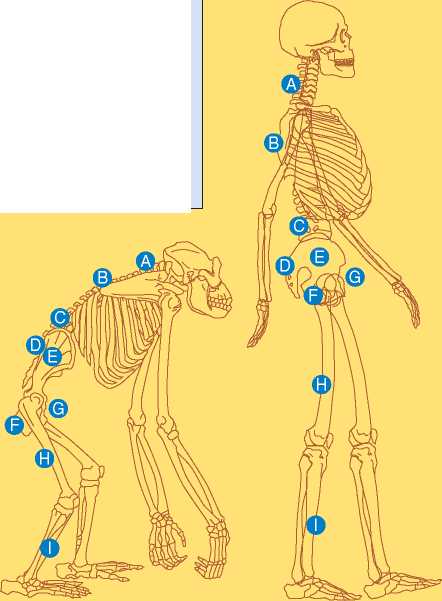What Is the Anatomy of Bipedalism, and How Is It Preserved in the Fossil Record?
Bipedalism is the shared derived characteristic used to establish whether a fossilized hominoid is part of the evolutionary line that produced humans. Evidence for bipedalism is preserved literally from head to toe. Bipedalism can be inferred from the forward position of the large opening in the base of the skull, a series of curves in the spinal column, the basin-shaped structure of the pelvis, the angle of the lower limbs from the hip joint to the knees, and the shape of the foot bones. Thus even fragmentary evidence can prove bipedalism, providing the right fragment is preserved. Several groups from between 4 and 7 million years ago (mya) have been proposed as the earliest bipedal human ancestor. Some of these, such as 4.4 mya Ardipithecus specimens, preserve evidence of facultative bipedalism, or an intermediate form of upright walking, and may be the link between earlier and later hominins.
What Role Did Bipedalism Play in Human Evolutionary History?
Numerous theories stressing adaptation have been proposed to account for the appearance of bipedalism in human evolutionary history. These theories range from the adaptive advantage of having hands free to carry young or wield weapons to adapting to the danger of too much heat in the brain from direct exposure to the sun in a hot, treeless environment. While bipedalism was present in the earliest forest-dwelling hominins, this way of movement may have conferred an adaptive advantage on bipeds as the environment became increasingly arid over the course of the Pliocene. Bipedalism appeared in human evolutionary history several million years before brain size expanded.
Who Were the First Bipeds, and What Were They Like?
The fossil record indicates that around the time of the Miocene to Pliocene transition, between 5 and 6 mya, the first confirmed bipeds appeared in Africa. The recently discovered genus Ardipithecus (4.4 to 5.8 mya) may be ancestral to the genus Australopithecus, a group of fossil bipeds known since the early 20th century. Australopithecines include a diverse group of fully bipedal species still possessing relatively small-sized brains in proportion to their body size. Some of the later australopithecines, known as “robust” forms, possessed particularly large teeth, jaws, and chewing muscles and represent an evolutionary dead end, disappearing from the fossil record completely by 1 mya. One of the other australopithecine species, though it is not clear which one, appears to be a direct ancestor of the genus Homo.

Figure 7.1 Bipedalism can be inferred from the position of the foramen magnum, the large opening at the base of the skull. Note its relatively forward position on the human skull (left) compared to the chimp skull.

Figure 7.2 Differences between skeletons of chimps and humans reflect their mode of locomotion.
Though genetic evidence established that the human line diverged from those leading to chimpanzees and gorillas between 5 and 8 mya, for a long time the fossil evidence of the early stages of human evolution was both sparse and tenuous. Today, however, several interesting specimens from Africa fill in this important period. Inclusion of any fossil specimen in the human evolutionary line depends upon evidence for bipedalism (also called bipedality), the defining characteristic of the human line. The possible human ancestors from the Miocene recently found in Chad (Sahelanthropus tchadensis) and Kenya (Orrorin tugenensis), dated 6 to 7 mya, were described in the last chapter. In this chapter, we will pick up our story with a diverse array of fossil bipeds from the Pliocene—the geological epoch that began around 5 mya beginning with Ardipithecus from the chapter opener.87
Before focusing on the fossils, however, let’s look at the anatomy of bipedalism—the shared derived characteristic distinguishing humans and their ancestors from the other African apes.




 World History
World History









